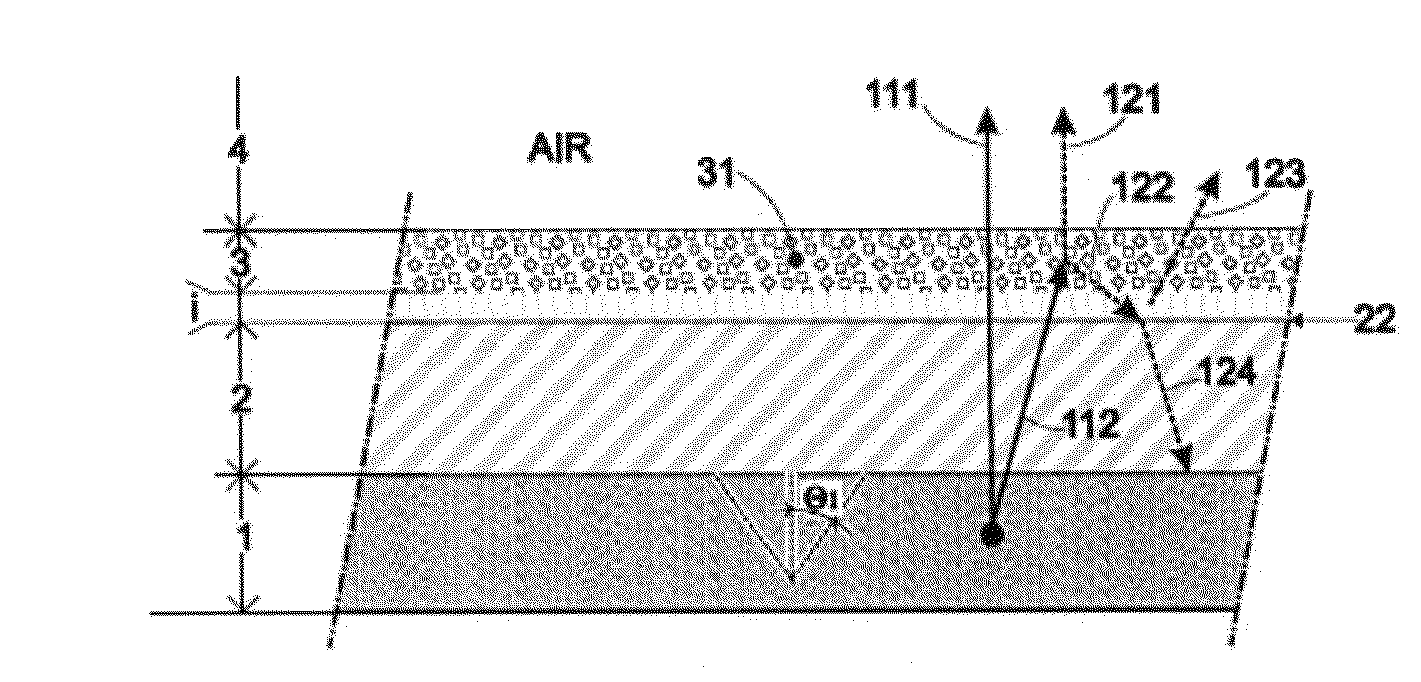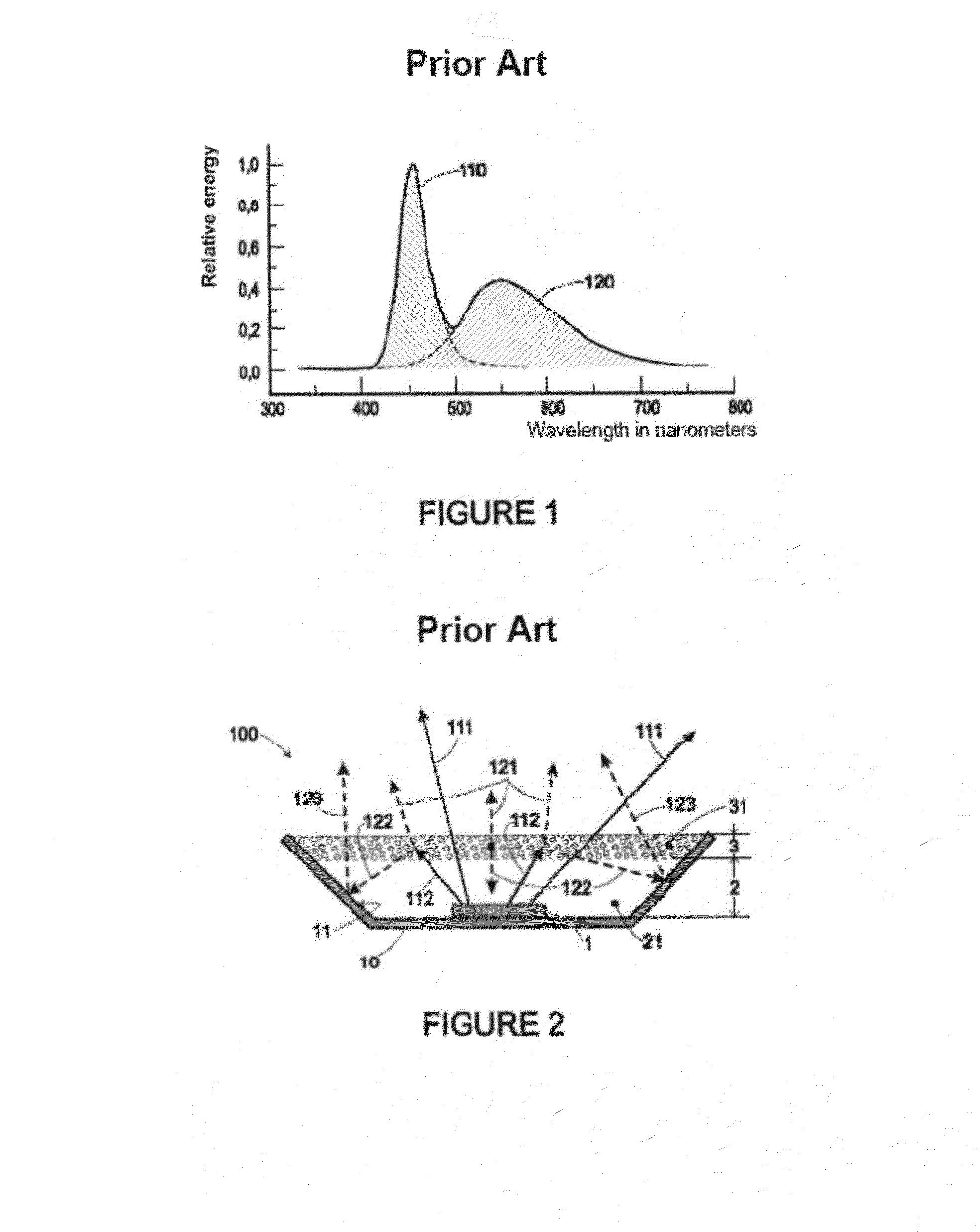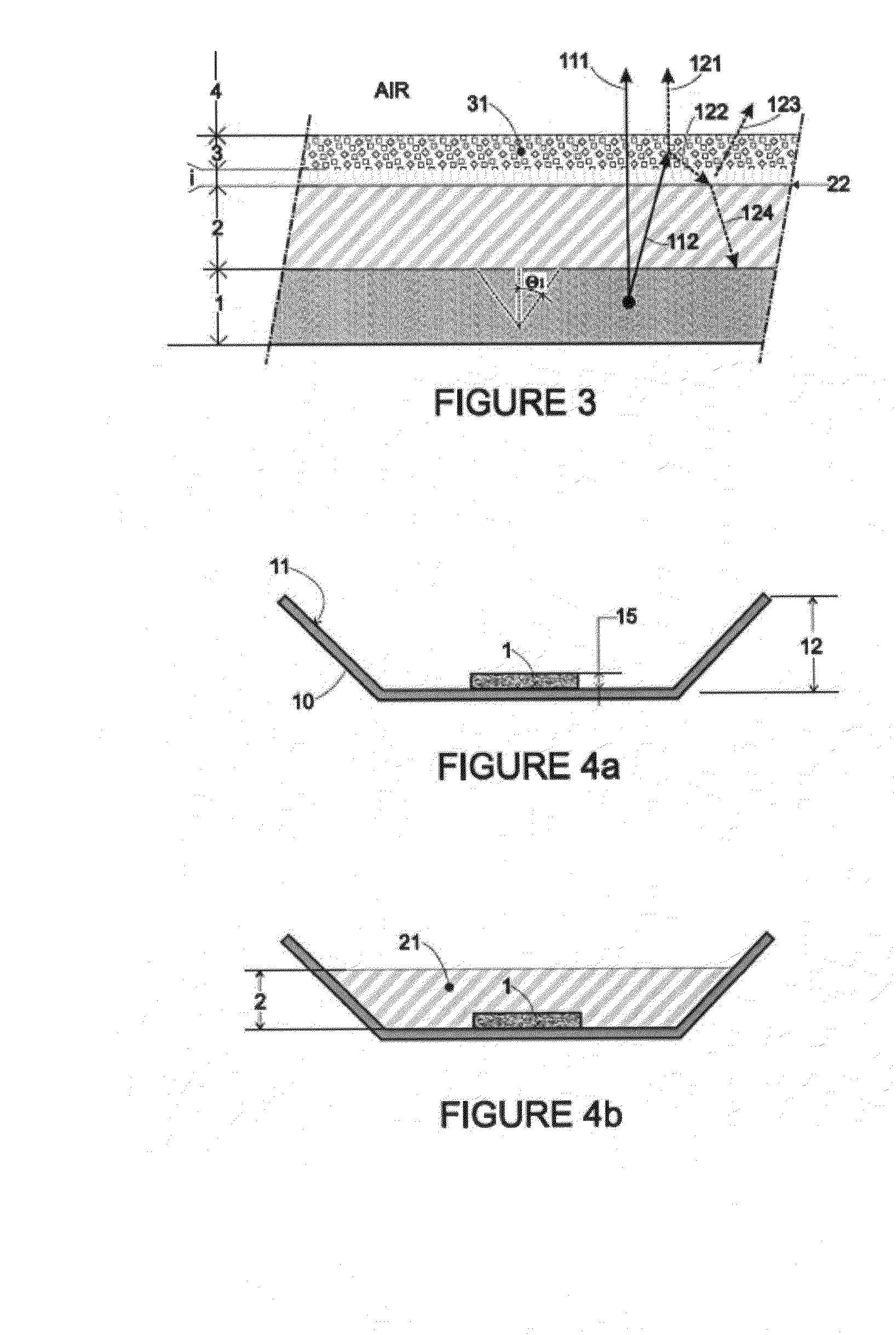Light emitting diode component
a technology of light-emitting diodes and components, which is applied in the manufacture of electrode systems, electric discharge tubes/lamps, and discharge tubes luminescent screens, etc., can solve the problems of increasing the complexity and cost of led components, and achieve the effects of reducing the roughness of this layer, increasing the complexity and cost of led components, and improving extraction
- Summary
- Abstract
- Description
- Claims
- Application Information
AI Technical Summary
Benefits of technology
Problems solved by technology
Method used
Image
Examples
Embodiment Construction
[0035]Before undertaking a detailed review of the embodiments of the invention, optional characteristics which may be used in combination or alternatively, if need be, are set forth below:[0036]The said face of the reflection layer has a roughness Ra less than 50 nm and preferably less than 5 nm. The roughness Ra is defined as the mean arithmetic deviation. It is usually measured by means of an atomic force microscope (AFM) for example.[0037]The index of refraction ni of the reflection layer is greater than the index n2 of the encapsulation layer. The reflection layer and the encapsulation layer preferably are configured so that ni / n2>1.2. Even more preferentially, the reflection layer and the encapsulation layer are configured so that ni / n2>1.4.
[0038]By using only the characteristics (indexes of refraction and roughness in particular) of the intermediate layer and the encapsulation layer, it is possible in this way to achieve a specular or almost specular behavior at the said inter...
PUM
| Property | Measurement | Unit |
|---|---|---|
| roughness Ra | aaaaa | aaaaa |
| roughness Ra | aaaaa | aaaaa |
| thickness | aaaaa | aaaaa |
Abstract
Description
Claims
Application Information
 Login to View More
Login to View More - R&D
- Intellectual Property
- Life Sciences
- Materials
- Tech Scout
- Unparalleled Data Quality
- Higher Quality Content
- 60% Fewer Hallucinations
Browse by: Latest US Patents, China's latest patents, Technical Efficacy Thesaurus, Application Domain, Technology Topic, Popular Technical Reports.
© 2025 PatSnap. All rights reserved.Legal|Privacy policy|Modern Slavery Act Transparency Statement|Sitemap|About US| Contact US: help@patsnap.com



